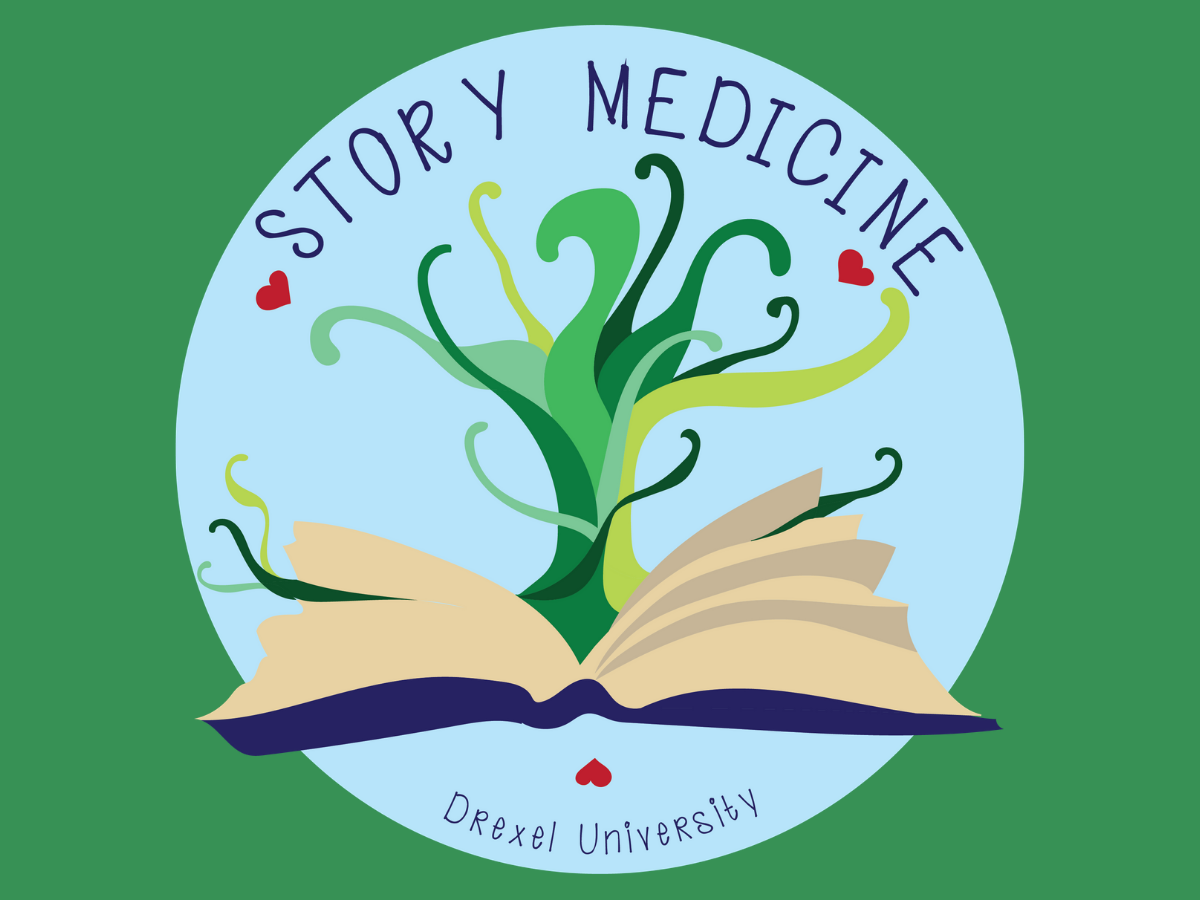One of the ways Drexel University is pursuing its goal to be “the most civically engaged university in the United States” is by creating Community-Based Learning (CBL) courses, one of which is WRIT 215, otherwise known as Story Medicine. In this class, students would visit younger patients in hospitals and put on performances of the stories they had written in hopes of bringing a smile to these children’s faces.
In a recent interview, I spoke with Professor Nomi Eve, director of the MFA program at Drexel University, about her experience teaching this course.
When asked to describe Story Medicine, she replied, “It’s a community-based learning in the English and Philosophy department in the College of Arts and Sciences… the overarching learning goals of the course are to teach students craft principles of creative writing in a way that serves a very special population or community, and in our case, the people we hope to connect with and make a difference for are kids who live with chronic illnesses, kids who may spend a significant amount of time in hospitals, kids who live with disabilities. It’s really important for me to say that we are not currently connecting with kids in hospitals right now, we’re more connecting with kids who are at home, and we’re in touch with their parents, but we’re not affiliated with any hospital or care system.”
Though the COVID-19 pandemic has kept students from working with hospitalized children in person, Eve refused to let it keep her and her students from communicating with younger patients.
“When the pandemic hit, and we could no longer go to the hospital, I had to really pivot and be like ‘Well, what can we do now?’ And so, I sort of went back to something else we’d been doing before, which was special projects with individual kids in which we’d really put a kid in the driver’s seat and say ‘What’s your creative vision? What story would you like to tell?’ And we did that with animation projects in the past and a fashion design project, and now I realized that we could do that with creative writing…I’m now partnering with Animation professors in Westphal to turn some of these stories that Story Medicine students are writing into 2-D animated read-aloud storybooks that we can give as gifts to these kids. So, we’ve definitely had to adjust, but the thing is, I think that no matter what the world has in store for us, we’re gonna keep doing this work because I think it’s working really well and making an impact both on students and on the families that we’re lucky enough to engage with.”
I asked Eve about how her class changes the overall educational experience for her students, to which she responded, “…I’ll say that any time you’re teaching a student how to do something… if they’re doing it for and with an actual, real person… students [will work] with a more compelling intention, and so, overall, I think student learning is deepened when students realize they have the capacity, the power, the ability to actually use their learned skills in order to make an impact on the real world and on a real person. So, I think there’s a real deepening of intention.”
“But there’s another thing story medicine does, it builds community. There’s something… really powerful about coming together with a group of people in order to achieve a goal, and that’s what we do in story medicine: we come together to learn how to do this thing…”
Mritika Talukder, a junior Health Sciences major and former Story Medicine student, also shared this sentiment when she recounted her experience in Story Medicine: “Story Medicine was truly an invaluable experience for me as I got a lot out of this course. In the midst of all the chaos and confusion brought on by the pandemic, I found myself looking forward to attending this class every week and writing stories for adorable young children…”
She also added, “Creating my stories and works made me think about how important entertainment and stories are for these children… and for their disabilities/experiences to be embraced in our stories. We need to write characters with disabilities and prove to children that they are nothing short of the heroes or princes/princesses they read about.”
I ended my interview with Professor Eve by asking if she had seen other schools or universities doing something similar to what Story Medicine does. “…I’m sure there are other professors like me out there, but you do really point to something important which is that community-based and community-engaged learning is something that’s very special at Drexel… And look, it’s an investment. These courses are not cheap to run and they’re complicated, you know? When my students have to fill out background checks and all sorts of other stuff in order to participate in the class, like, that’s complicated. But Drexel as an institution, and Drexel students, rise to that challenge and will do sort of the hard thing in terms of investing in these classes and students in terms of jumping through the hoops they need to jump through in order to take these classes because we all see the value. We see that at the end of the day, students learn differently and more intentionally when they’re taught this way, and students, oh my God, students feel so good about it. It’s infectious…”

Pooja Balar is a junior in the BS+MD program at Drexel University and is also pursuing a certificate in Creative Writing and Publishing. She loves spending time with her dog, as well as dancing, playing the guitar, and boxing. She’s a Marvel enthusiast and a Netflix fanatic, and when she’s not studying, she’s uploading blog posts on her personal website.
